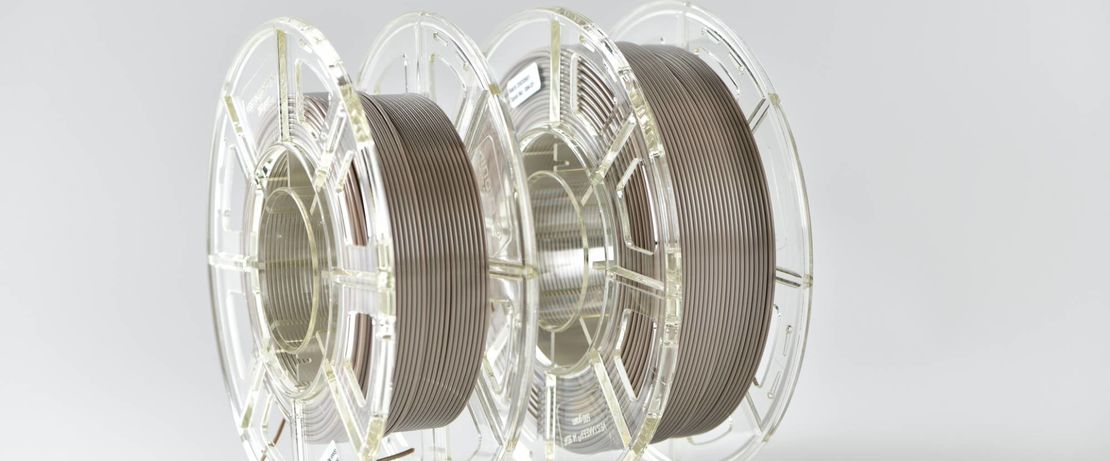German specialty chemicals company Evonik has introduced its new Vestakeep i4 3DF implant grade polyether ether ketone (PEEK) filament into its portfolio of 3D printing materials.
Having met ASTM F2026 requirements, the industry standard for surgical implant applications, the new material will allow for the production of 3D plastic surgical implants using Fused Filament Fabrication (FFF) technology.
“For modern medical technology, the development of our first 3D-printable implant material opens up new opportunities for customizing patient treatments,” said Marc Knebel, who heads the Medical Devices & Systems market segment at Evonik. “Orthopedics and maxillofacial surgery are examples of areas where this could be applied.”
The Vestakeep i4 3DF filament
First announced in 2018, Vestakeep i4 3DF is the first PEEK-based filament that can be used for implant applications. Previous materials such as KetaSpire PEEK and Radel PPSU were only graded for limited contact medical applications, meaning less than 24 hours of bodily fluid or tissue contact were permitted, and they were not suitable for implant applications.
Based on Evonik’s previous Vestakeep i4 G material, which was used in spinal implants, maxillofacial surgery, and sports medicine, the new material displays a high biocompatibility, biostability, and x-ray transparency. This makes implantation easier, both on the surgeon, and on the patient in follow-up appointments
Developed specifically for use with FFF technology, the high-performance polymer was produced in cleanroom conditions, making it ideal for surgical applications. Wound onto either 250 or 500-gram spools, and with a diameter of 1.75mm, the natural-colored filament is suitable for direct use in standard FFF 3D printers for PEEK materials.
Evonik will also offer a testing-grade version of the PEEK filament, which shares the same processing properties as the implant-grade material, but without the certification required for medical applications.

Surgical applications in 3D printing
While PEEK materials haven’t been used to create medical implant devices before, they have been used extensively in other medical applications.
German 3D printer and materials manufacturer Apium Additive Technologies announced in November 2018, that it had successfully used Evonik’s Vestakeep i4 G material to make implants and devices for the skull and hand. Using its M220 3D printer, Apium Additive produced implants that could be applied to the head, skull, neck, face, or jaw, with the potential to treat other injuries and infections as well.
German medical 3D printing startup Kumovis, launched its first 3D printer, the R1, in August last year, which was designed to manufacture patient-specific medical devices and prototypes using high-performance plastics such as PEEK. Using an optional filter with the 3D printer prevents foreign particles from entering the build chamber. This creates a similar effect to the establishment of a clean room, an environment often required for medical research purposes.
FossiLabs, a US-based medical 3D printing start-up, also used PEEK materials to produce porous 3D printed bone-like scaffolding structures. Utilizing FossiLabs’ proprietary hardware, the bone-like structures are designed to be used to benefit existing implantable devices, where bone growth may be desired.
The nominations for the 2020 3D Printing Industry Awards are now open. Who do you think should make the shortlists for this year’s show? Have your say now.
Subscribe to the 3D Printing Industry newsletter for the latest news in additive manufacturing. You can also stay connected by following us on Twitter and liking us on Facebook.
Looking for a career in additive manufacturing? Visit 3D Printing Jobs for a selection of roles in the industry.
Featured image shows Evonik’s newly launched implant grade PEEK filament. Photo via Evonik.



